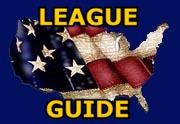KENT WILLIAMS I
Kent Williams I – Modern “All-Star” Manager
Is an AIM modern-style micromanager designed to handle Original Franchise All-Star (OFAS) or all-star type teams. Broadly speaking, the Williams managers style emulates the famous Baltimore manager of the late 1960’s through early 1980’s. To wit, they tend to play for big innings, dislike the bunt, take advantage – both defensively and offensively – of platoon advantages, and usually try to stay with starting pitchers, at least the quality ones, quite long. However, many of these strategies “adjust” based on the specific ratings and statistics for the team being managing. Additionally, this version greatly increases the offensive aggressiveness, particularly in extra inning games. This includes more pinchhitting, especially where platoon advantages are apparent.
There are several problems in managing all-star-type rosters that the Williams address. The first is deciding when to sub – especially offensively – for players. Do you pinchit for a player with a .280 batting average with a bench player with a .325 one? Comparing numbers alone, the answer would be “Yes”; however one can imagine a number of scenarios – many of which cannot be programmed – when you would not hit for, say, a Yogi Berra even though a much better hitter (statistically) may be available. Generally, Williams WILL – depending on the circumstances – pinchhit for a Berra in the situation if the team is losing late. This is almost exclusively done, however, for the ninth inning or later and will usually occur only if a heavy platoon advantage is in effect. However, the strategies will adjust based on the team he is managing and the only way to “figure” out his thinking is to run Williams through a series of games.
The second critical problem concerns bullpen use – especially the use of starting pitchers in relief. Since most OFAS teams tend to be “closer heavy” – i.e., bullpens consisting of two or three closer-types relievers (25+ saves), Williams will have to occasionally use a quality starter in relief, especially in early or middle-inning relief. Although Williams sets aside a rotation (first five starters based on games started), he will dip into this rotation occasionally when his team’s bullpen is weak or tired. However, he will save a starter from being used in relief. Other strategies to note:
1) Williams does have a blowout sub strategy. It’s somewhat limited, however, and usually tends to involve the use of “itchy” players as subs. He will, though, sub for the “superstar” type player in lopsided games. He will PH, PR and/or sub defensively for this category of player.
2) For teams that are “closer heavy” (see above paragraph), Williams will spot use one of the closers (usually the one with the most relief appearances MINUS saves) as a middle reliever. Usually this occurs only if the team has no other middle reliever currently available (Defined as: QR of one or two, saves less than 6 and a RR of 6 or more). Those closers with the most saves are, generally, used as the primary closer and will not be used in non-save situations except for close games late (tied or down by two runs in the eighth inning and later). However, this approach may be abandoned in situations where the team’s bullpen is somewhat weak due to overuse.
3) As noted above, Williams is generally conservative with his use of players and doesn’t PR or PH unless down late. Again he tries – both offensively and with pitching changes – to take advantage of high platoon ratings/numbers (+3 or more).
4) This version (2.10) is more aggressive with player usage than earlier editions. This will be noticeable especially in extra-inning games or where the offensive team is losing in the ninth (onward). Additionally, this version is more likely to use non-rotation starting pitchers who had historic low relief appearances much more in relief, especially in middle innings for team’s with no long relief pitchers.







